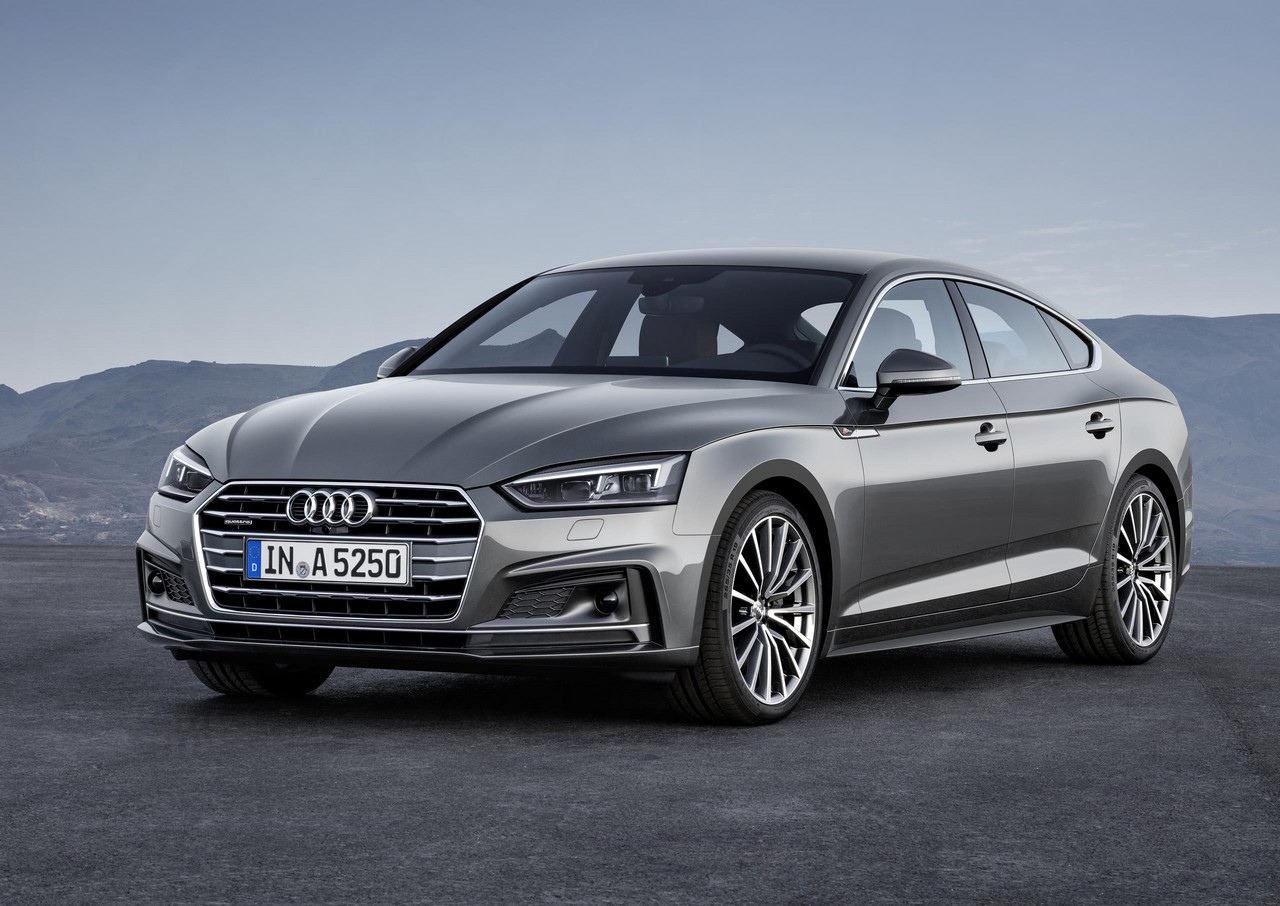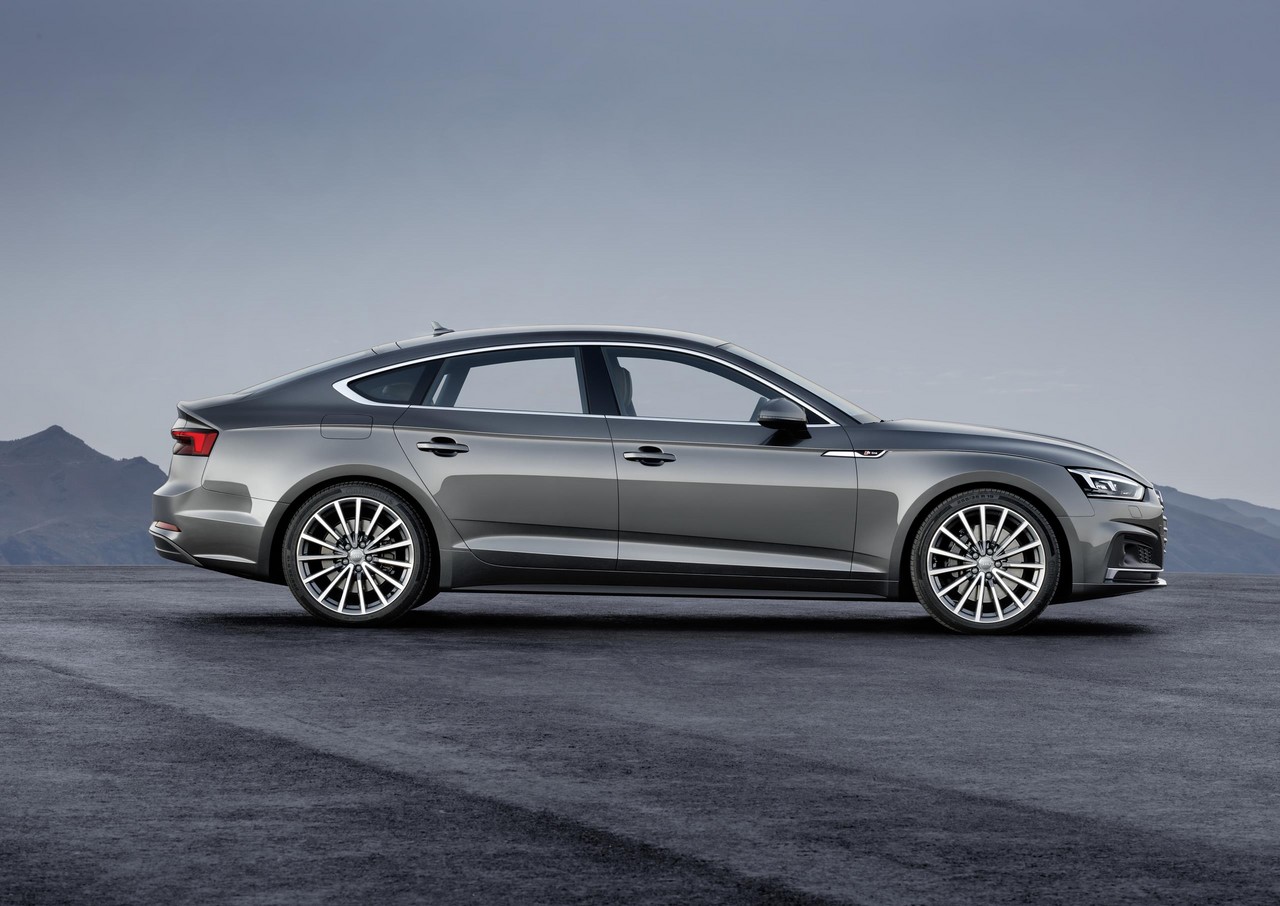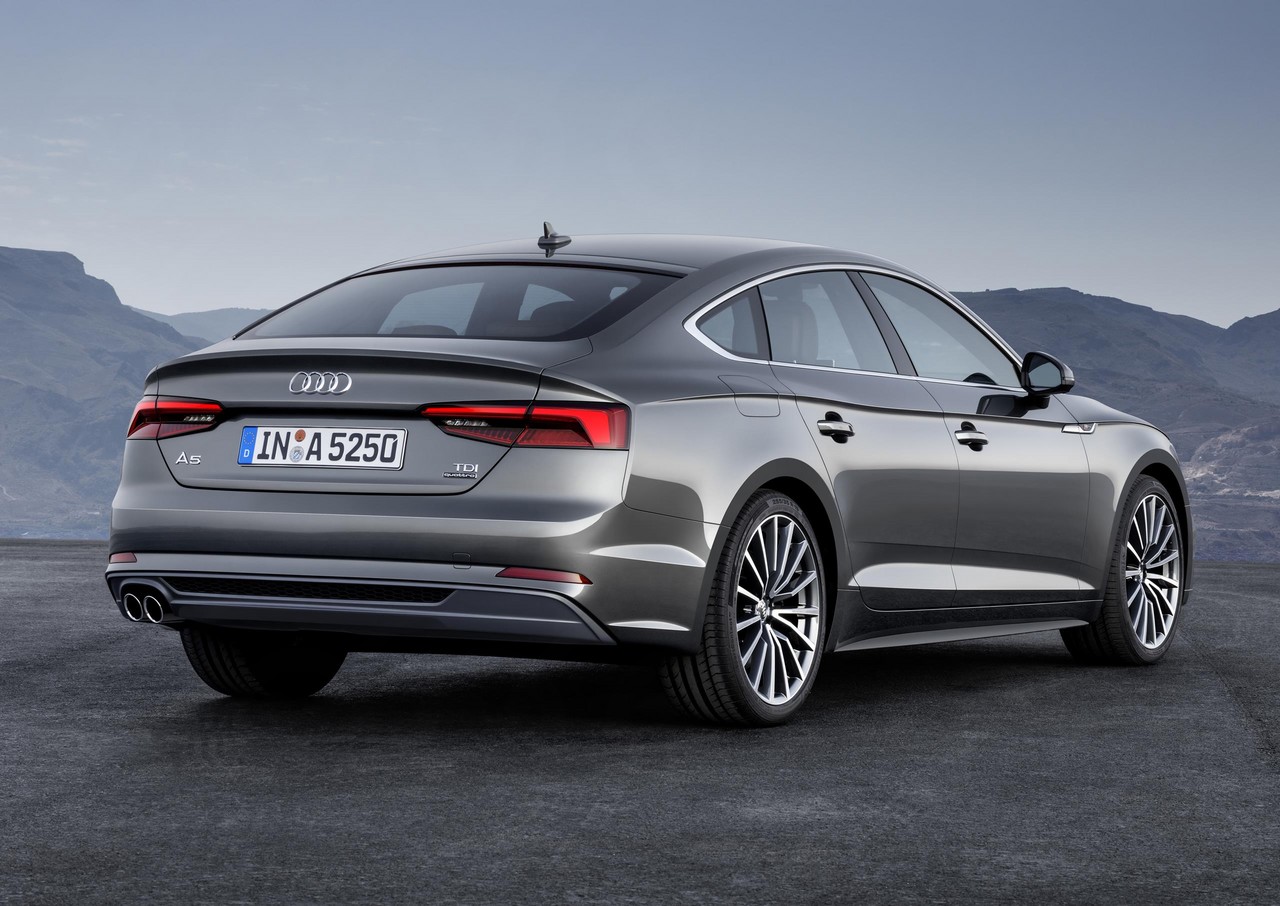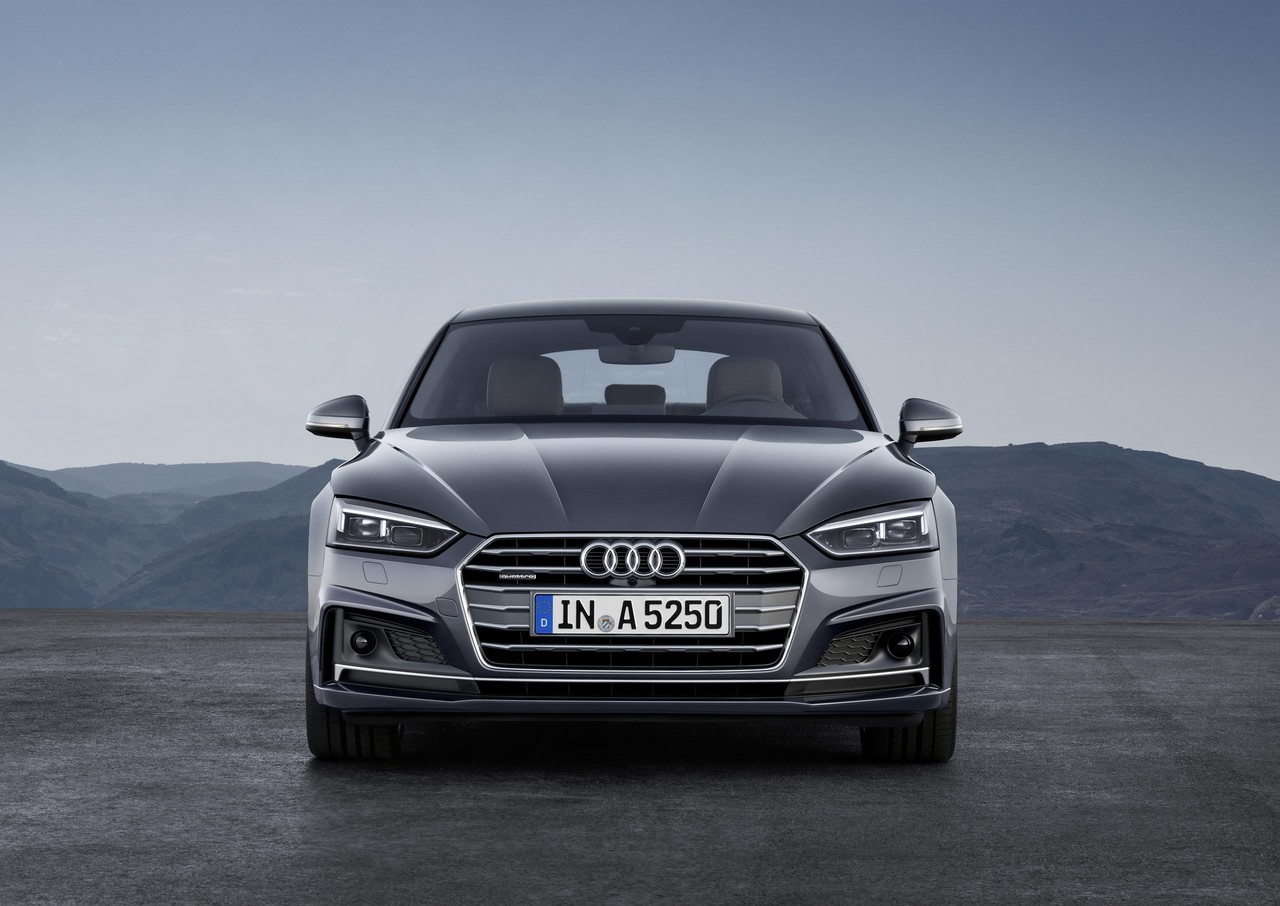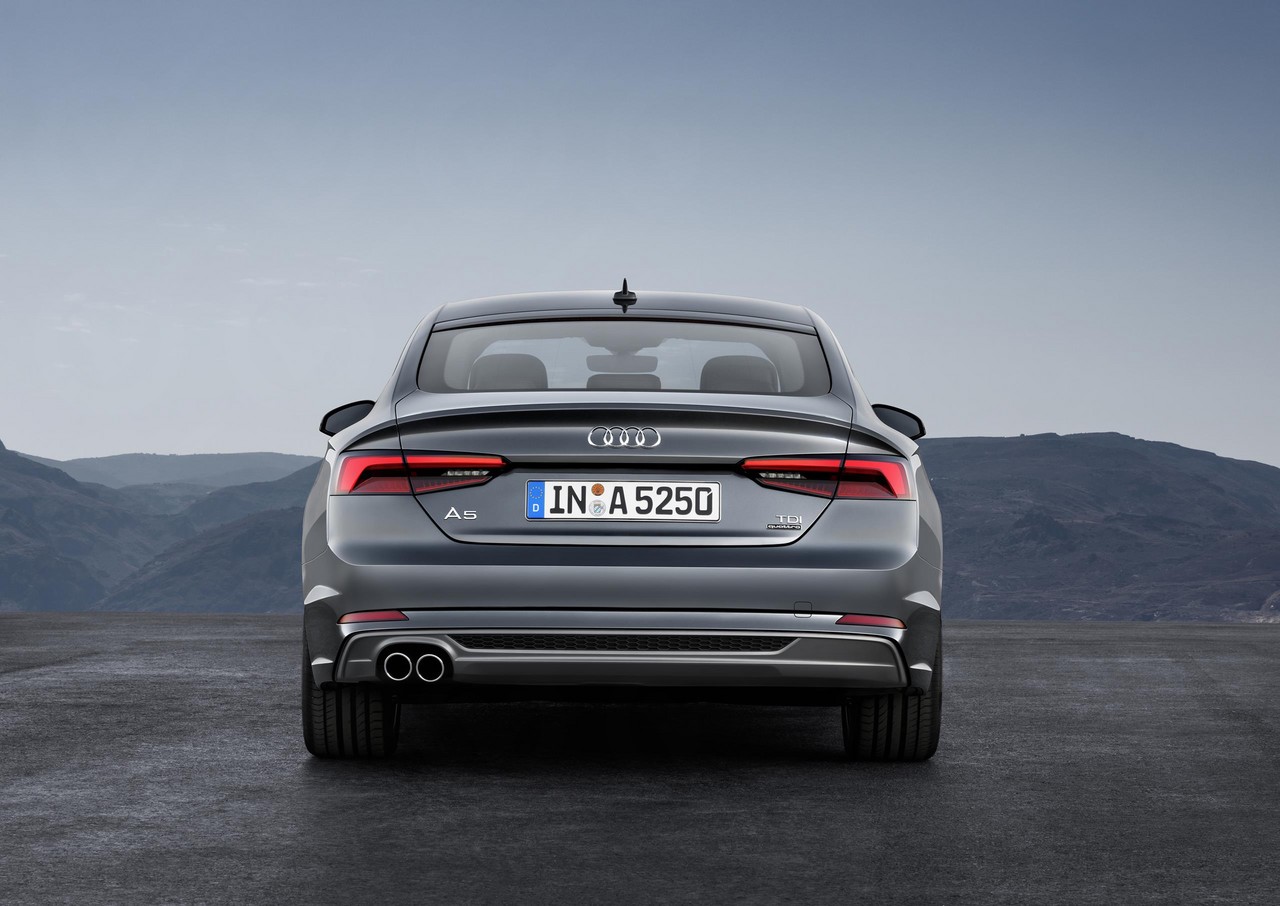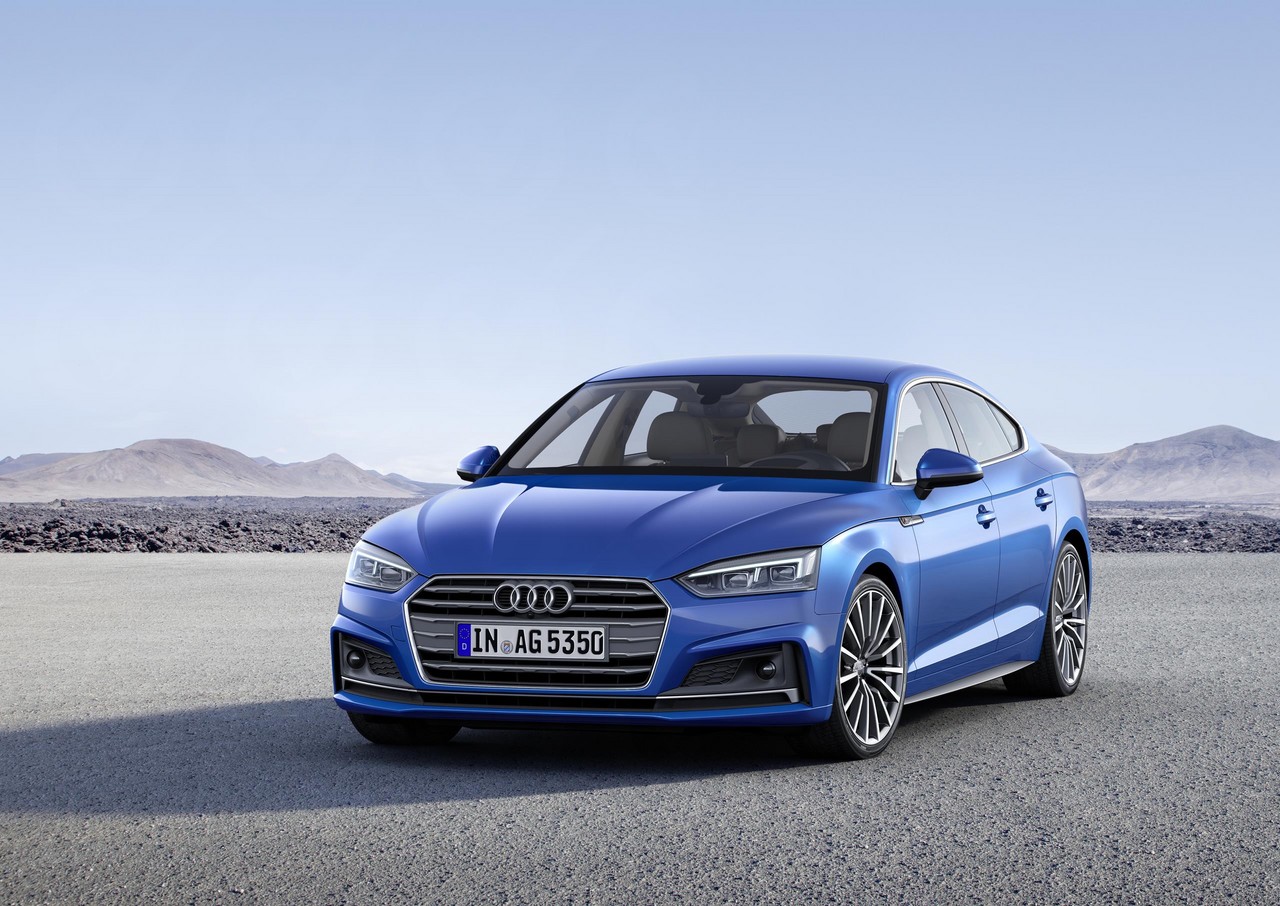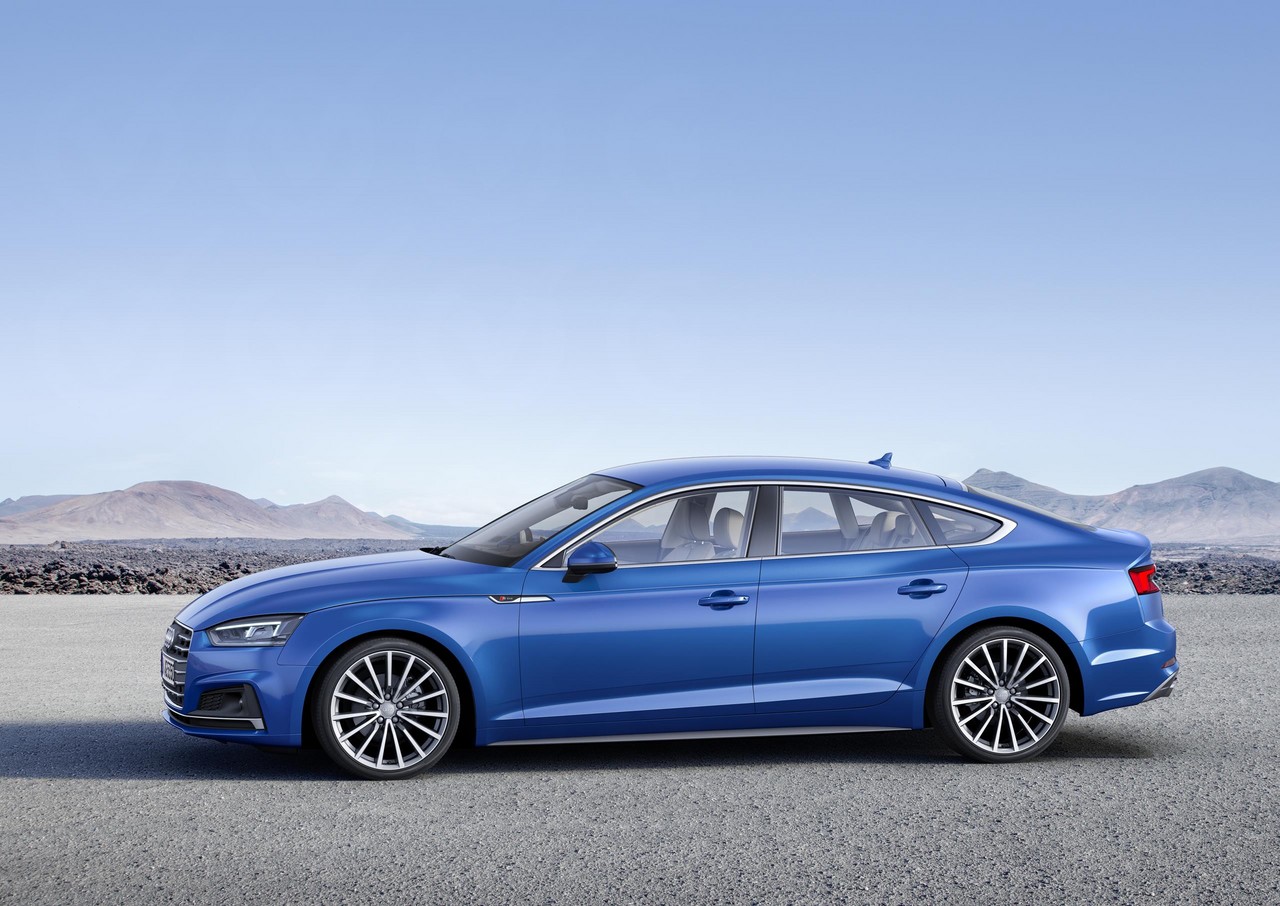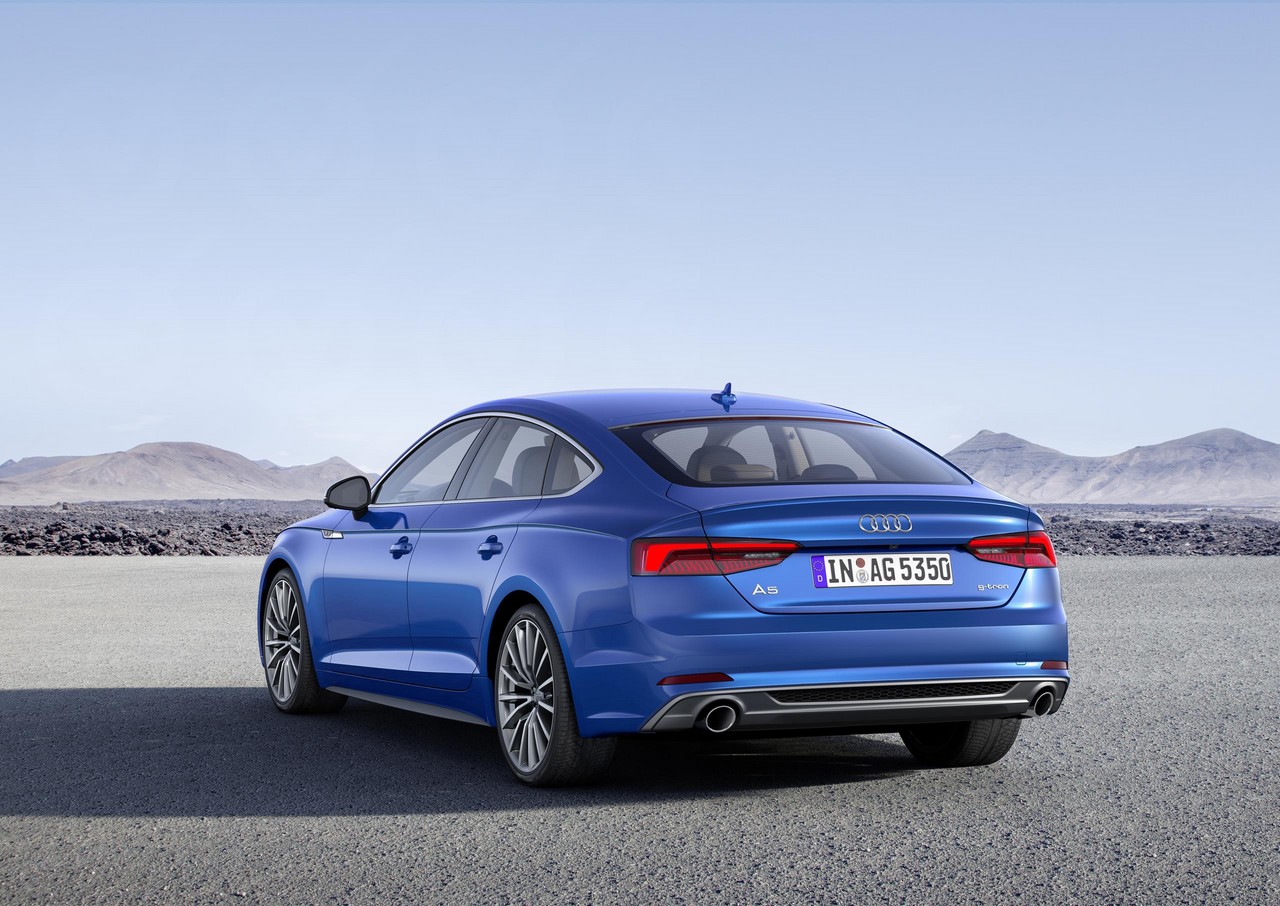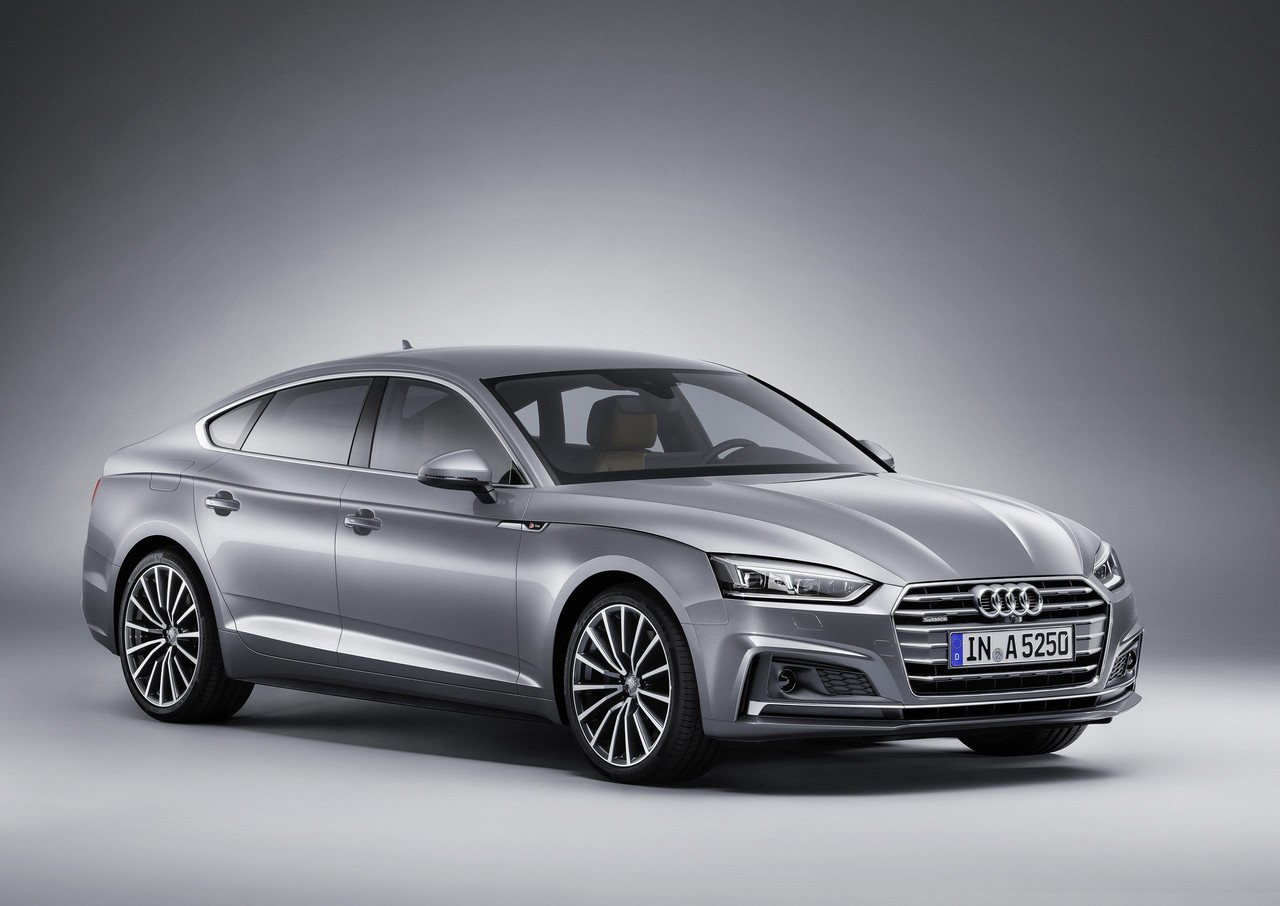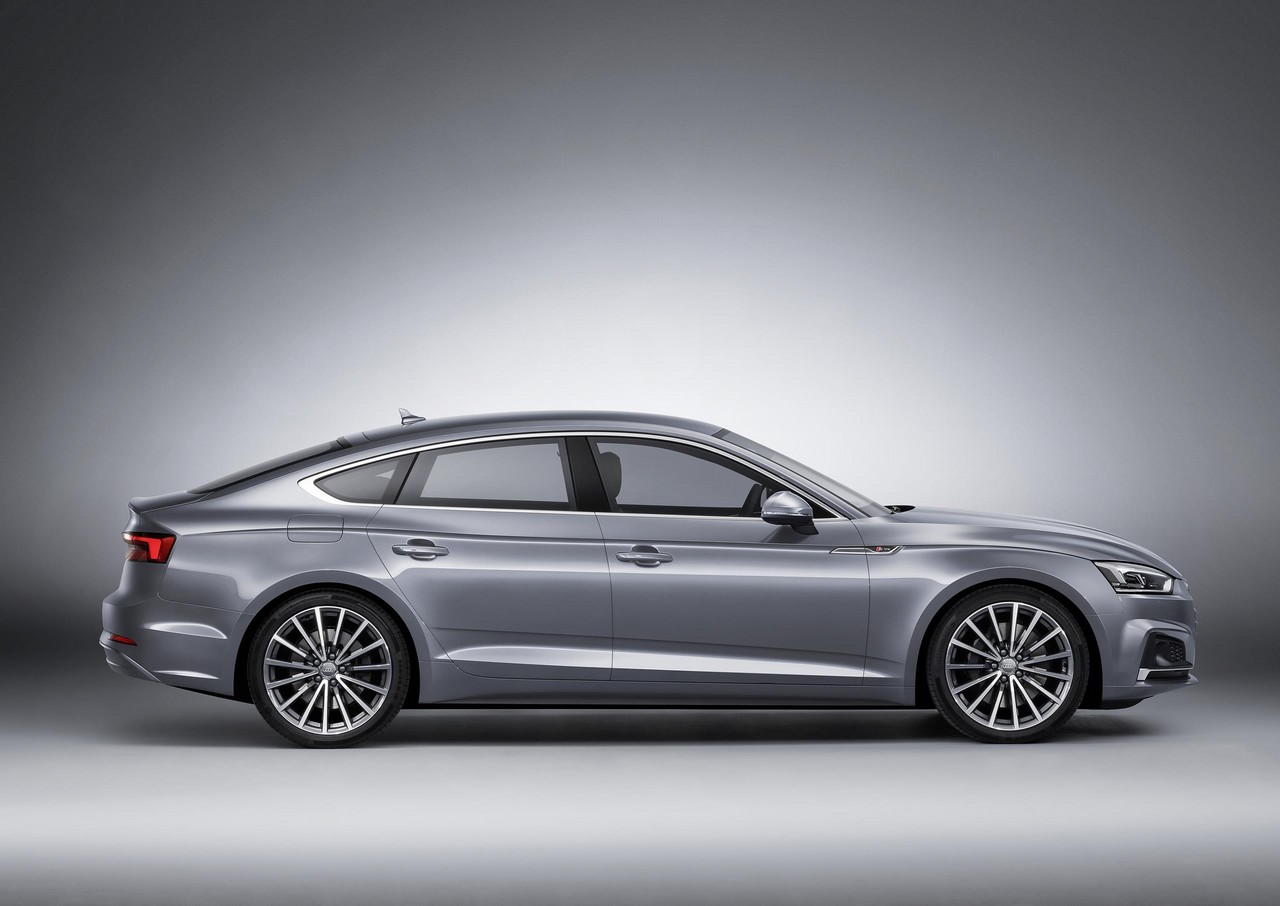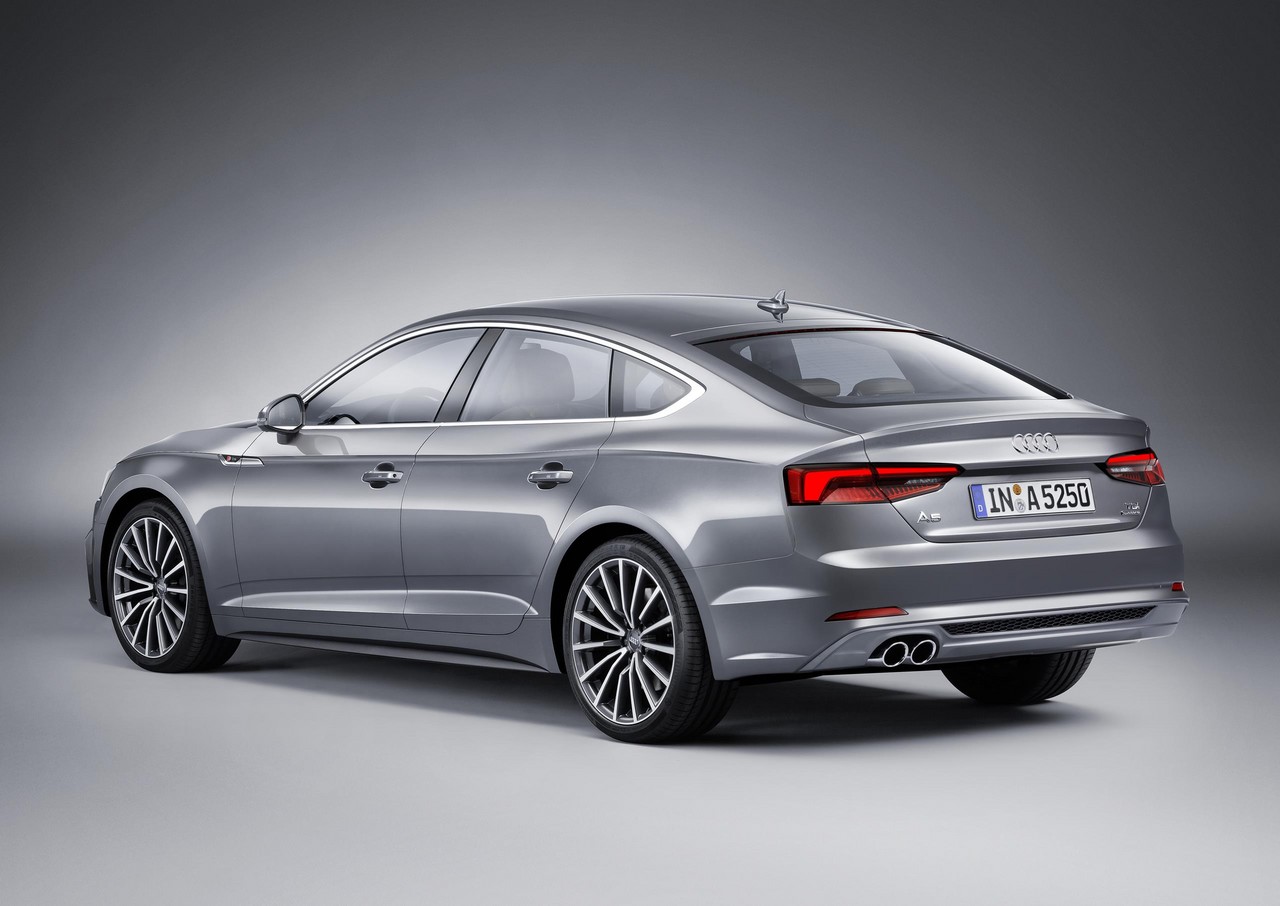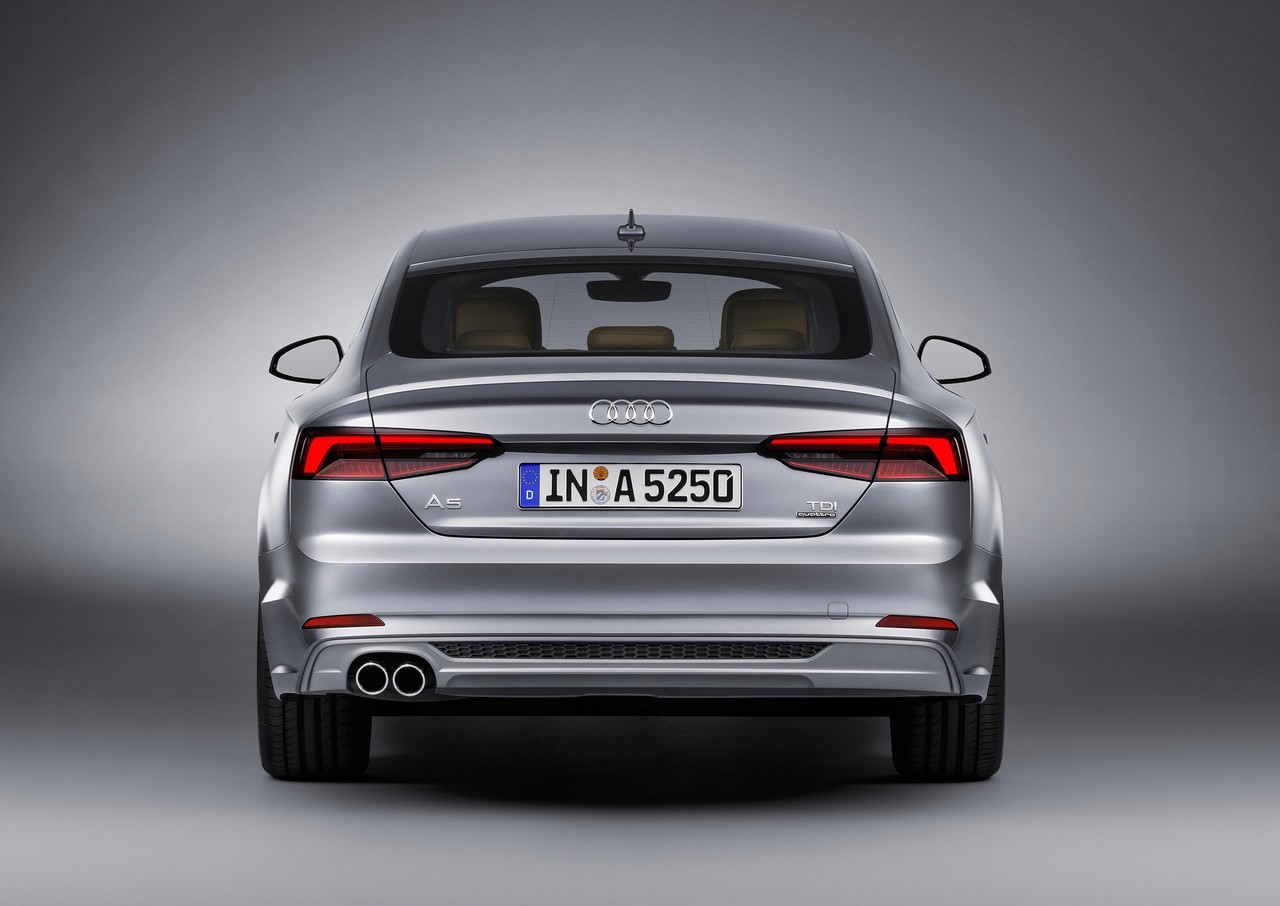
- Responsive and refined 2.0-litre turbo petrol engines
- High standard of interior fit and finish
- Comfortable and supportive front seats
- Predictable handling and good body control
- Steering is overly assisted at low speeds and around centre, and lacks feedback
- Short-travel suspension lacks progressive damping and compliance
- On low profile tyres, poor ride quality and increased interior noise
- S tronic transmission quick to upshift for fuel economy
- Rear seat entry and space not suited to adults
Overview
Production of the Audi F5 A5 Sportback commenced in October 2016 and it was officially released in Australia in March 2017. Manufactured in Ingolstadt, Germany, the Audi F5 A5 Coupe range consisted of the front-wheel drive 2.0 TFSI and all-wheel drive (‘quattro’) 2.0 TFSI and 2.0 TDI variants. All models, however, were fitted with a seven-speed double clutch transmission (Audi’s ‘S tronic’).
To reduce fuel consumption,
- All engines for the Audi F5 A5 Sportback had a ‘Start-Stop’ function which enabled them to shut down as the vehicle was coming to rest – this occurred at speeds of 7 km/h and below; and,
- A free-wheel function disengaged the engine from the driveline to reduce engine braking at speeds between 55 km/h and 160 km/h.
| Variant | Engine | Trans. | Peak power | Peak torque |
|---|---|---|---|---|
| 2.0 TFSI | 1984 cc CVKB turbo petrol I4 | 7sp DCT | 140 kW at 4200-6000 rpm | 320 Nm at 1450-5200 rpm |
| 2.0 TFSI quattro | 1968 cc DETA turbo petrol I4 | 7sp DCT | 185 kW at 5000-6000 rpm | 370 Nm at 1600-4500 rpm |
| 2.0 TDI quattro | 1984 cc CYRB turbo diesel I4 | 7sp DCT | 140 kW at 3800-4200 rpm | 400 Nm at 1750-3000 rpm |
quattro
The four-wheel drive ‘quattro’ system for the Audi F5 A5 Sportback was a purely mechanical system which utilised a self-locking central differential (designed as a planetary gear train). In normal conditions, the differential provided 60 per cent of the engine’s torque to the rear axle and 40 per cent to the front, i.e. a 40:60 front:rear torque split. Depending on the situation, however, up to 70 per cent of the engine’s torque could be directed to the front and up to 85 per cent to the rear.
Wheel-selective torque control
As standard, the Audi A5 Sportback had ‘wheel-selective torque control’ which, during ‘dynamic cornering’, would brake the front inner wheel (for front-wheel drive models) or front and rear inside wheels (for quattro models) to prevent wheelspin and improve turn-in.
Body and dimensions
The Audi F5 A5 Sportback was underpinned by Volkswagen AG’s MLB platform. Compared to the Audi 8TA A5 Sportback which it replaced, the F5 A5 Sportback was 18 mm shorter (at 4733 mm), 11 mm narrower (1843 mm) and 17 mm lower (1384 mm), but had a 14 mm longer wheelbase (2831 mm). Luggage capacity for the F5 A5 Sportback was 480 litres.
Suspension
The Audi F5 A5 Sportback had five-link front suspension in which the upper links were integrated into the bodywork and the lower links were attached with rubber mounts to a hybrid steel/aluminium sub-frame. For the five-link rear suspension, the axle was insulated from the body by hydraulically damped axle mounts. To reduce mass, the axle links, pivot bearings and damper stilts were made of forged aluminium.
As an extra-cost option, the Audi A5 Sportback could be specified with Audi’s ‘Continuous Damping Control’ (CDC) shock absorbers which featured electromagnetically controlled valves in their pistons to control the flow of hydraulic fluid. For the CDC system, the central suspension control unit processed inputs from sensors that measured movement and acceleration (longitudinal and transverse) to control each shock absorber individually. Furthermore, the ‘Audi drive select driving-dynamics’ system enabled the driver to select from ‘sports’ or ‘comfort’ settings.
Steering
The Audi F5 A5 Sportback had electromechanical power steering in which the level of power assistance was inversely proportional to vehicle speed. As an extra-cost option, the F5 A5 Sportback was available with ‘dynamic steering’ which varied its ratio – by up to 100 per cent – according to the vehicle speed, steering angle and the mode selected in the ‘Audi drive select driving-dynamics’ system.
Safety equipment
Standard safety equipment for the Audi F5 A5 Sportback included dual front airbags, front and rear side airbags, full-length curtain airbags (i.e. for front and rear occupants), ABS, electronic brake force distribution, brake assist, electronic stability control, traction control and front seatbelts with pre-tensioners and load limiters.
As standard, the Audi F5 A5 Sportback was fitted with:
- Audi pre sense city: operating at speeds up to 85 km/h, Audi pre sense city used a windscreen-mounted front camera to scan the road for other vehicles and pedestrians. If there was a risk of a collision, the driver received a series of warnings. If the driver failed to respond, full braking force would be applied autonomously. At initial speeds of up to 40 km/h, collisions could be prevented; at higher speeds (up to 85 km/h), the severity of the collision would be reduced;
- Audi pre sense basic: initiated occupant protection measures such as tightening the front seatbelts, closing the windows and sunroof (where fitted), and activating the hazard lights when ‘unstable driving conditions’ were detected;
- Audi pre sense rear: could warn of potential collisions from behind, warn following traffic by rapidly flashing the brake lights and activate the ‘Audi pre sense basic’ protection measures described above;
- Audi side assist: operating at speeds above 15 km/h, Audi side assist used two rear radar sensors to monitor traffic up to 70 metres behind the A4. If another vehicle approached quickly or was in the driver’s blind spot, a warning LED in the housing of the appropriate door mirror would illuminate. If the driver activated the indicator to change lanes, the LED would blink rapidly to warn the driver;
- Rear cross-traffic assist: when reversing at low speeds, rear cross-traffic assist used the rear radar sensors to detect approaching traffic. If approaching traffic was detected which may cross the vehicle’s path, the driver received warnings (visual, acoustic and a brief, jolting application of the brakes);
- Exit warning: activated when the vehicle stopped moving, exit warning warned occupants if vehicles were approaching from behind by illuminating red fibre optics in the door-opening mechanism as the doors were opened;
- Multi-collision brake: after a collision, multi-collision brake provided ‘controlled application of the brakes’ to reduce vehicle speed and reduce both the likelihood and severity of subsequent collisions; and,
- Attention assist: monitored driver behaviour and issued a warning if the driver was assessed to be ‘inattentive’.
The Audi F5 A5 Sportback also had an ‘active bonnet’ which deployed pyrotechnic charges in the event of a pedestrian collision to raise the height of the bonnet and locks to secure it to provide clearance over ‘hard points’ in the engine bay. In doing so, the likely severity of the pedestrian’s impact was reduced.
Assistance package tour
As an extra-cost option, the Audi F5 A5 Sportback could be specified with the ‘Assistance package tour’ which included:
- Audi active lane assist: used the front camera to detect lane markings at speeds of 65 km/h and above. If the Audi A4 approached a lane marking without the driver having previously indicated, the electromechanical steering could provide an adjustment to bring the vehicle back into its lane. Using the MMI system, the driver could determine whether this system should be activated at all times or only before the lane marking is crossed. As an option, the driver could choose to have steering wheel vibrations as a warning signal;
- Adaptive Cruise Control (ACC): using two front radar sensors and the camera, ACC can maintain a specified distance – from five distances – between the A4 and the vehicle ahead. Furthermore, ‘Audi drive select’ can be used to adjust the rate of acceleration and other control dynamics;
- Stop&Go function: an extension of the ACC and limited to models with automatic transmissions, ‘Stop&Go’ operated at speeds of 60 km/h to apply the brakes and bring the vehicle to rest. Once traffic began moving, the Audi A4 will automatically accelerate;
- Turning assist: active at speeds from 2 km/h to 10 km/h, ‘turning assist’ operated once the driver activates the right-hand turn signal (for RHD vehicles) and could monitor oncoming traffic. In hazardous situations, the brakes could be applied to bring the vehicle to rest;
- Audi pre sense front: an extension of ‘Audi pre sense city’, pre sense front operated at speeds up to 250 km/h and could prevent front-to-rear collisions or reduce their severity. In hazardous situations, the driver would receive warnings visual and acoustic warnings to apply the brakes, followed by a brief application of the brakes for a jolting effect to alert the driver. If the driver failed to respond, the A5 Sportback would decelerate to the greatest possible extent if the vehicle ahead of it is still moving;
- Collision avoidance assist: activated when the A5 Sportback needed to avoid an obstacle to avert a collision. Using data from the front camera, the ACC and radar sensors, ‘avoidance assist’ could calculate the distance of the car ahead, its width and degree of offset. The brakes would be briefly applied to alert the driver of the potential danger and, once the driver started steering, the system would provide ‘support with the necessary lane changes with controlled interventions to the power steering’;
- Turn assist: monitored the lane of oncoming traffic when the driver was turning across it and when oncoming vehicles were turning in front of the Audi A5 Sportback. Turn assist included individual wheel braking and steering assistance functions; and,
- High beam assist: automatically switched between low and high beam headlights for improved visibility, using a sensor to determine when it was safe to do so (i.e. without dazzling other drivers).
Euro NCAP testing
The Audi B9 A4 and Audi F5 A5 Sportback were based on the same platform and shared much of the same structure for occupant protection. Nonetheless, additional tests were performed by Euro NCAP testing to confirm that the Audi B9 A4’s results were applicable to the F5 A5 Sportback. As such, the F5 A5 Sportback received a five star safety rating which included an 89 per cent adult occupant protection rating, an 87 per cent child occupant protection rating and a 75 per cent ‘safety assist’ rating. In the frontal offset test, protection of the driver’s head, thighs and feet were rated as good, though lower leg protection was rated as adequate (a slight risk of serious injury) and chest protection as marginal (a moderate risk of serious injury). Maximum points were awarded in the side impact test; in the more severe pole test, however, chest protection was rated as marginal.
Features: Audi F5 A5 Sportback 2.0 TFSI and 2.0 TDI quattro
The standard infotainment system for the Audi F5 A5 Sportback 2.0 TFSI and 2.0 TDI quattro included a 180 watt ‘Audi sound system’ with 10 speakers (including subwoofer) and a six-channel amplifier, a digital radio tuner (DAB+), CD/DVD player, 2 SDXC card readers, 10 GB flash memory for media storage, Bluetooth mobile phone connectivity and audio streaming, smartphone integration for Apple or Android devices via USB, ‘Audi connect’ with Wi-Fi hotspot and Google services (required a data plan), and an ‘Audi music interface’ with two USB inputs and a 3.5 mm auxiliary socket. The A5 Sportback 2.0 TFSI and 2.0 TDI quattro were also equipped with Audi’s ‘MMI navigation plus’ which consisted of a seven-inch high-resolution display with 3D maps, live traffic updates, integrated voice control and MMI touch control panel with handwriting recognition.
Beyond this, standard features for the A5 Sportback 2.0 TFSI and 2.0 TDI quattro included 8.5J x 18-inch alloy wheels with 245/40 tyres, three-zone climate control air conditioning, leather upholstery, power adjustable front sport seats, cruise control, LED headlights, LED daytime running lights, dusk-sensing headlights, rain-sensing wipers, ‘Audi parking system plus’ (i.e. front and rear parking sensors and a rear view camera), a leather-wrapped steering wheel with gearshift paddles, 40:20:40 split and folding rear seats, remote central locking with proximity key, power adjustable and heated door mirrors with folding function and kerb view on reverse for the passenger’s side, a height and reach adjustable steering column, push-button start, interior ambient lighting, floor mats, ‘Aluminium ellipse’ inlays, tyre pressure monitoring, a trip computer, an alarm and an immobiliser. As standard, the Audi F5 A5 Sportback was also fitted with:
- A power-operated tailgate which could be opened or closed with a kicking motion beneath the rear bumper; and,
- Audi’s ‘virtual cockpit’, a configurable 12.3-inch high-resolution colour display in place of conventional instrument cluster dials.
Options: Audi F5 A5 Sportback
Extra-cost options for the Audi F5 A5 Sportback included:
- A 755 watt Bang & Olufsen Sound System with 3D sound, including a 16-channel amplifier and 19 loudspeakers;
- A 360 degree camera system which used four wide-angle cameras;
- ‘Park assist’ which could detect parking spaces and provide automated steering for parallel or perpendicular parking manoeuvres while the driver controlled vehicle speed; and,
- Matrix LED headlights which contained twelve LEDs with three reflectors. Using data from the front camera, the control unit could switch individual LEDs on or off as required, providing 64 different levels of lighting. Using information from the optional MMI Navigation plus system, the direction of the matrix LED headlights could also change before the steering wheel was turned.
Specifications
